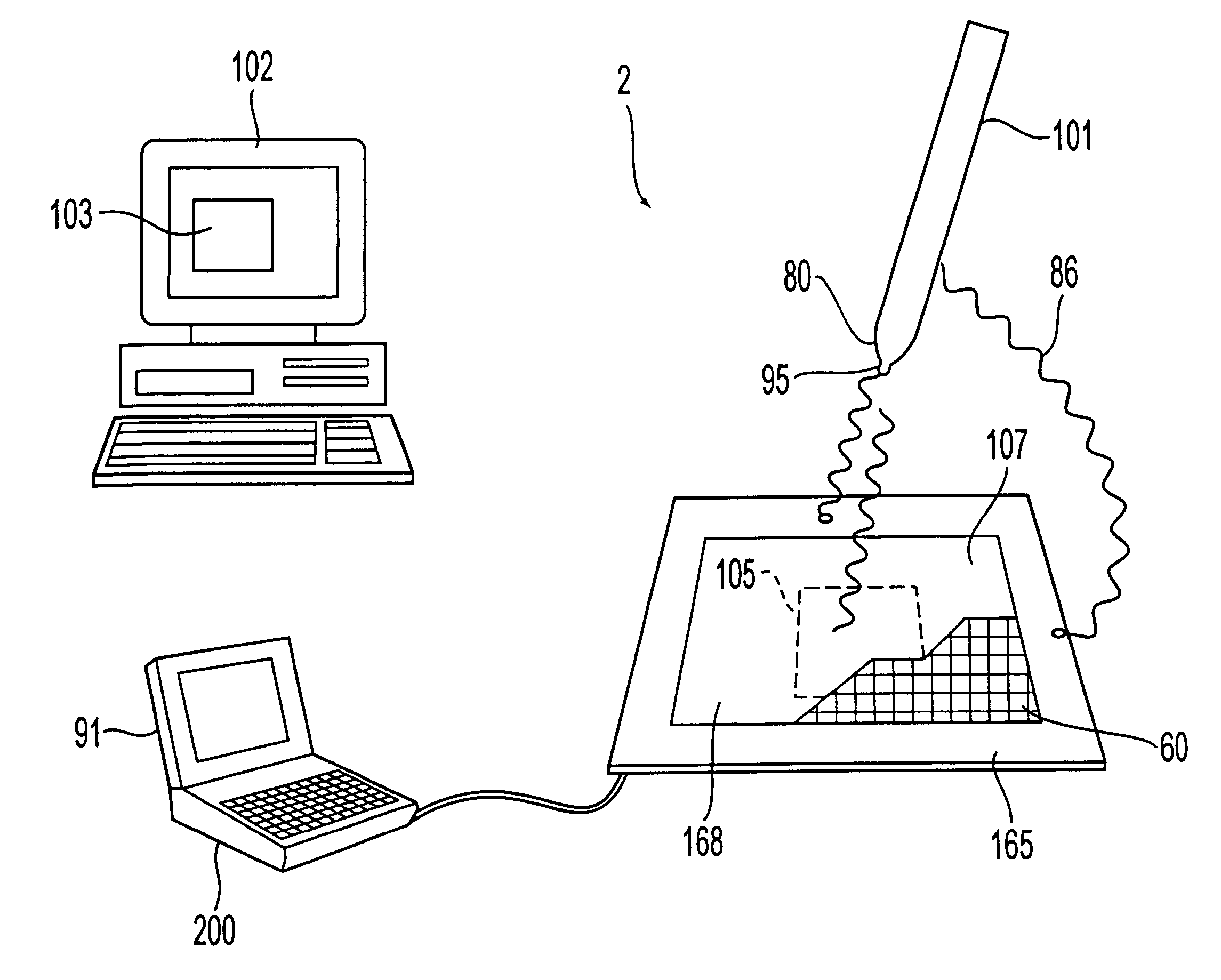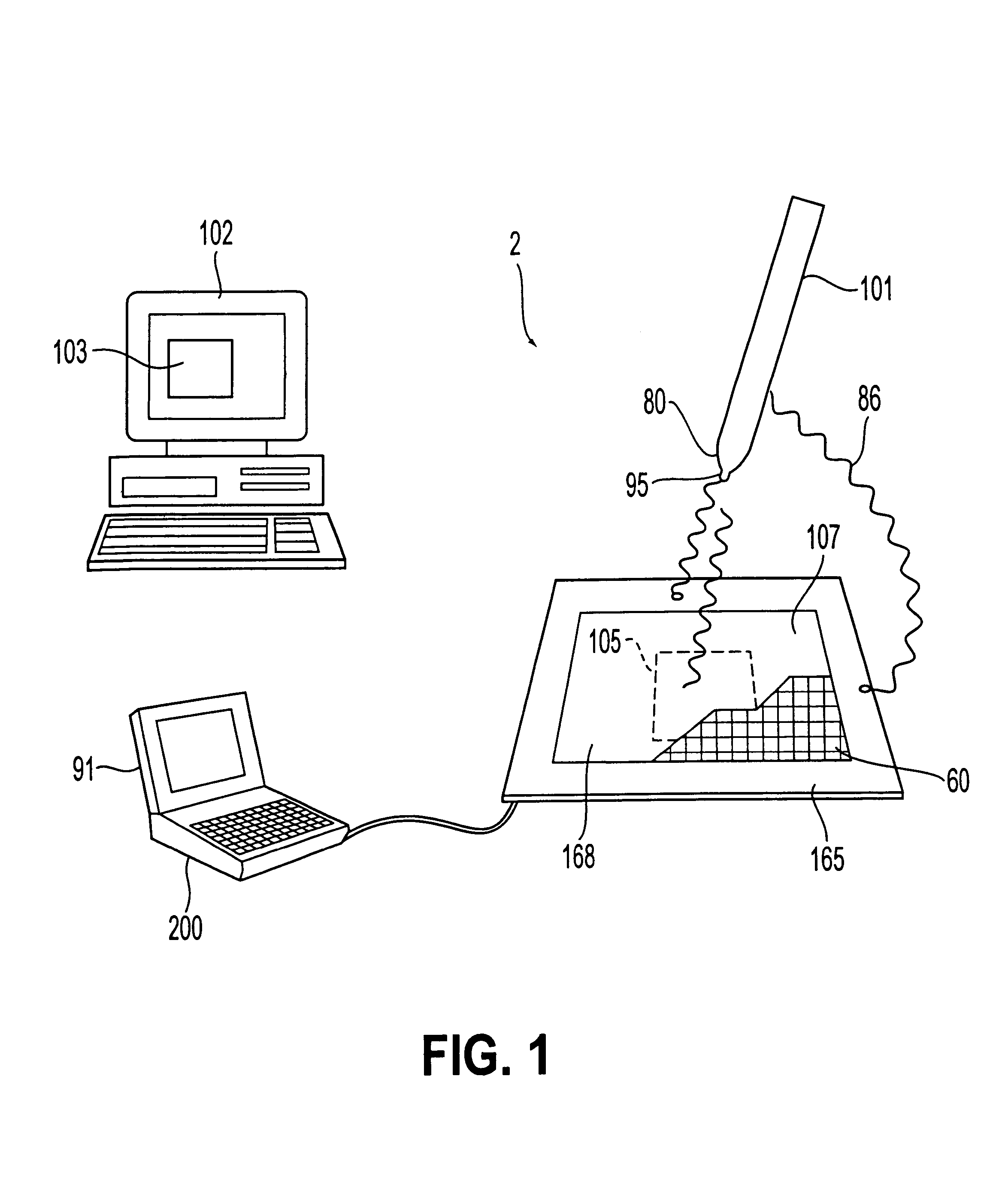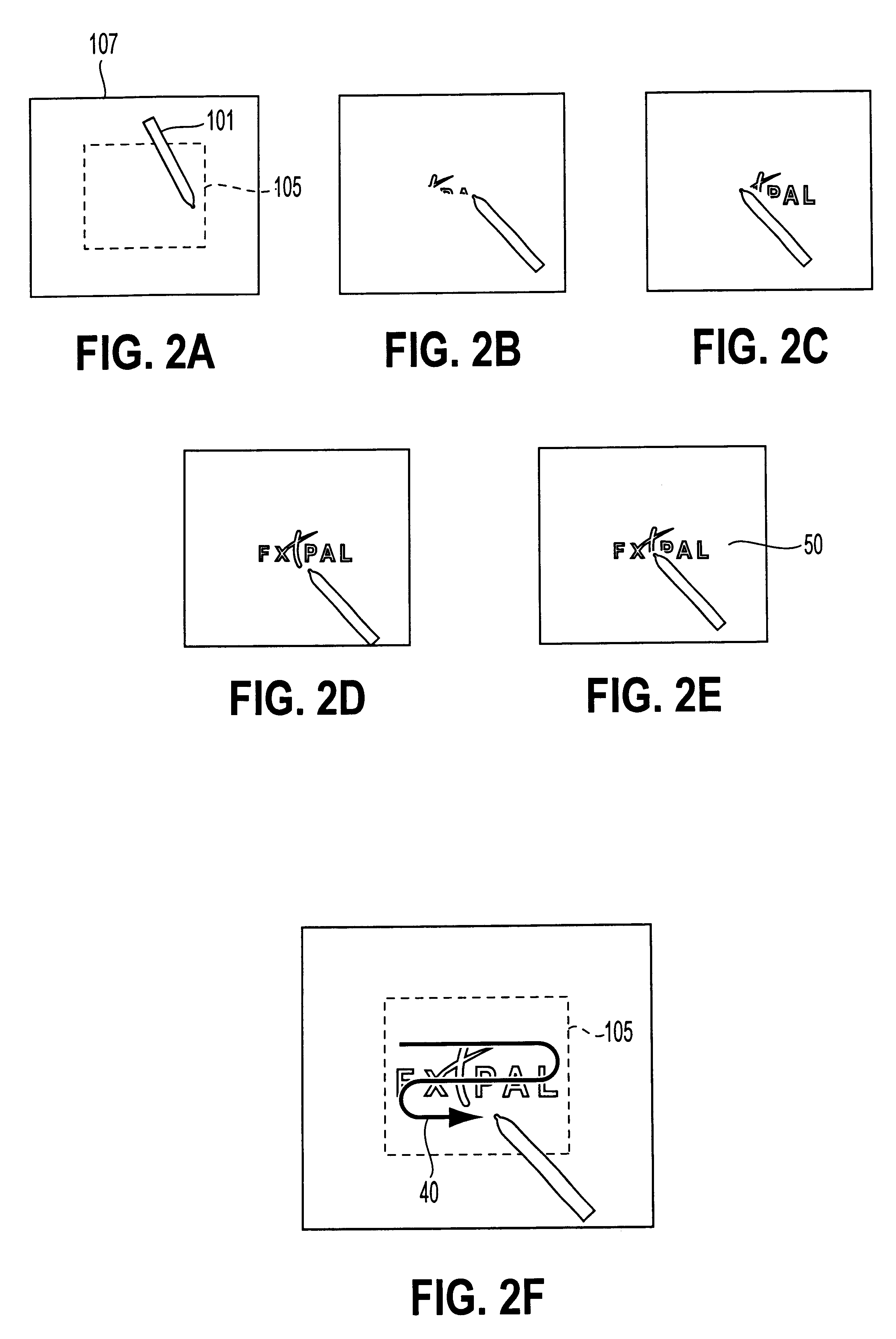Method and system for position-aware freeform printing within a position-sensed area
a position-sensed area and freeform printing technology, applied in the direction of digital output to print units, instruments, recording apparatuses, etc., can solve the problems of slow transcribing information, error prone, and inability to write an email address,
- Summary
- Abstract
- Description
- Claims
- Application Information
AI Technical Summary
Problems solved by technology
Method used
Image
Examples
Embodiment Construction
In accordance with this invention, data information can include, for example, images, text, or any other known or later developed data information.
FIG. 1 shows a first embodiment of a position-aware freeform printing system 2 in accordance with the present invention. In this embodiment, the position-aware freeform printing system 2 includes a source image space 103 on a source medium 102, a printing device 101, a position sensing device 165, a target image space 105 on a target medium 107 and a controller 200.
In a non-printing mode, the printing device 101 defines a source image space 103 on the source medium 102 from which an image is selected and which is captured by the controller 200. A target image space 105 on the target medium 107 is defined into which the image will be printed. The controller 200 processes and formats the image to fit into the target image space 105. The rendering of the image onto the target medium is controlled while the target medium 107 is positioned wit...
PUM
 Login to View More
Login to View More Abstract
Description
Claims
Application Information
 Login to View More
Login to View More - R&D
- Intellectual Property
- Life Sciences
- Materials
- Tech Scout
- Unparalleled Data Quality
- Higher Quality Content
- 60% Fewer Hallucinations
Browse by: Latest US Patents, China's latest patents, Technical Efficacy Thesaurus, Application Domain, Technology Topic, Popular Technical Reports.
© 2025 PatSnap. All rights reserved.Legal|Privacy policy|Modern Slavery Act Transparency Statement|Sitemap|About US| Contact US: help@patsnap.com



